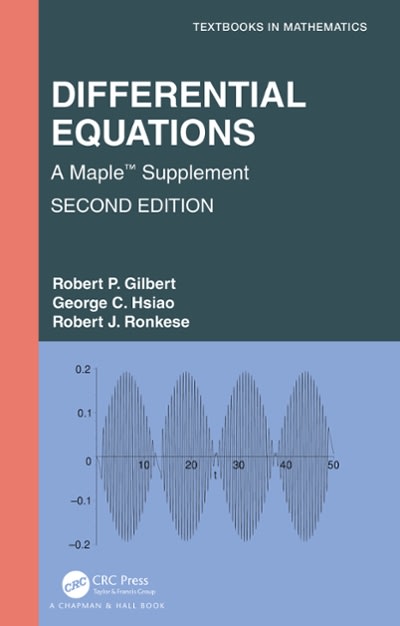Question
(1)Suggest sample spaces for the following experiments: (a) Three dice are rolled and their sum computed. (b) Two real numbers between 0 and 1 are
(1)Suggest sample spaces for the following experiments:
(a) Three dice are rolled and their sum computed.
(b) Two real numbers between 0 and 1 are chosen.
(c) An American is chosen at random and is classified according to gender and
age.
(d) Two different integers are chosen between 1 and 10 and are listed in
increasing order.
e) Two points are chosen at random on a yardstick and the
distance between them is measured.
(2)Let A, B, and C be three events, such that each event has probability .5 each
intersection of two has probability .25 , and P(A B C) = .125.
Find the probability that
(a) exactly one of the events occurs,
(b) none of the events occurs,
(c) at least one of the events occurs,
(d) all of the events occur
(e) exactly two of the events occur.
(3)From the integers 1, . . . , 10, three numbers are chosen at random without replacement.
(a) What is the probability that the smallest number is 4?
(b) What is the probability that the smallest number is 4 and the largest is 8?
(c) If you choose three numbers from 1, . . . , n, what is the probability that the smallest
number is j and the largest is k for possible values of j and k?
(4)The three prisoners John, Paul, and Ringo learn that two of them
will be set free but not who. Later, Ringo finds out that he is one of the two,
and, excited, he runs to John to share his good news. When John finds
out, he gets upset and complains "Why did you tell me? Now that there are only
me and Paul left, my chance to be set free is only 1/2 , but before it was 2/3."
What do you think of his argument? What assumptions do you make?
(5)You are playing roulette, each time betting on "odd," which occurs with probability
18/38 and gives you even money back. You start with $10 and decide to
play until you have either doubled your fortune or gone broke.
Compute the probability that you manage to double your fortune if in each round you bet
$10, $5, $2, and $1 dollar, respectively.
After you have found the best strategy, give an intuitive explanation of why it is the best and why it is
called "bold
play."
Step by Step Solution
There are 3 Steps involved in it
Step: 1

Get Instant Access to Expert-Tailored Solutions
See step-by-step solutions with expert insights and AI powered tools for academic success
Step: 2

Step: 3

Ace Your Homework with AI
Get the answers you need in no time with our AI-driven, step-by-step assistance
Get Started


